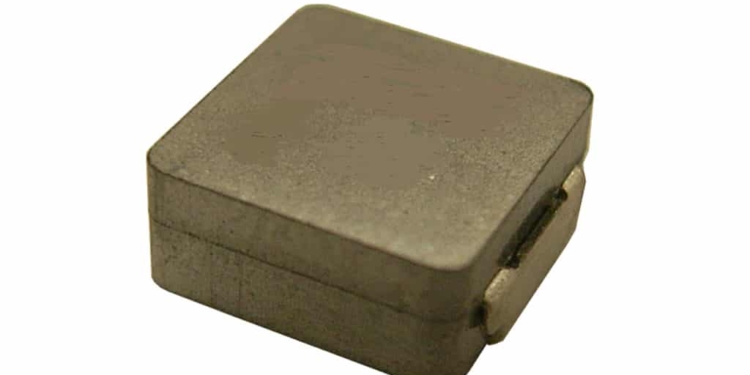Source: Sumida news
Further to the addition of 0530CDMCC/DS and 0420CDMCC/DS, 0315CDMCC/DS (3.7×3.4×1.5mm Max.) and 0320CDMCC/DS (3.7×3.4×2.0mm Max.) are newly added to the CDMC series as the Metal Compound Molding Type Inductors.
Metal compound molding construction is used in the CDMC series to achieve high electric performance and high magnetic shielding, and aslo bring low audible core noise, low profile and high current performance.
Key Features:
- Magnetically shielded
- Operating temperature range: -55℃~+125℃ (including coils self temperature rise)
Applications:
Ideally used in notebook, ultrabook, tablet PC, LCD display, server application; HDD,SSD modules application; Low profile, high current power supplies; Battery powered devices; High current, POL converters; DC/DC converter in distributed power systems
Parts List (0315CDMCC/DS):
| Part Name | Inductance [Within] (μH) ※1 | D.C.R. at 20℃ (A) Max. (Typ.) (mΩ) | Saturation Current (A) Max.(Typ.) ※2 | Temperature Rise Currrent (A) ※3 |
| 0315CDMCCDS-R56MC | 0.56 ± 20% | 25.00 (20.50) | 5.20 (6.10) | (5.50) |
| 0315CDMCCDS-R82MC | 0.82 ± 20% | 32.00 (26.50) | 4.20 (4.90) | (5.00) |
| 0315CDMCCDS-1R0MC | 1.00 ± 20% | 41.00 (34.00) | 4.10 (4.80) | (4.30) |
| 0315CDMCCDS-1R5MC | 1.50 ± 20% | 65.00 (53.50) | 3.40 (4.00) | (3.50) |
| 0315CDMCCDS-2R2MC | 2.20 ± 20% | 94.00 (78.00) | 3.60 (4.30) | (2.80) |
| 0315CDMCCDS-3R3MC | 3.30 ± 20% | 123 (102.50) | 1.90 (2.20) | (2.50) |
| 0315CDMCCDS-4R7MC | 4.70 ± 20% | 199 (166) | 1.90 (2.30) | (1.80) |
Parts List (0320CDMCC/DS):
| Part Name | Inductance [Within] (μH) ※1 | D.C.R. at 20℃ (A) Max. (Typ.) (mΩ) | Saturation Current (A) Max.(Typ.) ※2 | Temperature Rise Currrent (A) ※3 |
| 0320CDMCCDS-R22MC | 0.22 ± 20% | 10.20 (8.50) | 6.90 (8.10) | (10.00) |
| 0320CDMCCDS-R33MC | 0.33 ± 20% | 11.40 (9.50) | 6.50 (7.60) | (9.50) |
| 0320CDMCCDS-R47MC | 0.47 ± 20% | 15.60 (13.00) | 5.20 (6.20) | (7.50) |
| 0320CDMCCDS-R56MC | 0.56 ± 20% | 18.00 (15.00) | 4.80 (5.70) | (7.00) |
| 0320CDMCCDS-R68MC | 0.68 ± 20% | 21.60 (18.00) | 4.60 (5.40) | (6.50) |
| 0320CDMCCDS-1R0MC | 1.00 ± 20% | 31.20 (26.00) | 4.40 (5.20) | (5.50) |
| 0320CDMCCDS-1R5MC | 1.50 ± 20% | 45.60 (38.00) | 3.20 (3.80) | (4.00) |
| 0320CDMCCDS-2R2MC | 2.20 ± 20% | 72.00 (60.00) | 2.90 (3.40) | (3.50) |
| 0320CDMCCDS-3R3MC | 3.30 ± 20% | 108 (90.00) | 2.10 (2.50) | (2.50) |
※1 Measuring frequency inductance at 100KHz, 1.0V
※2 Saturation current: The actual value of DC current when the inductance is over 70% of the initial value.
※3 Temperature rise current: The actual value of DC current when the coil temperature rise is △T=40℃. △T=40℃ (Ta=25℃) Board conditions: FR4, Copper=70μm, four-layer PWB, t=1.6mm.
Production Stage:
In mass production































